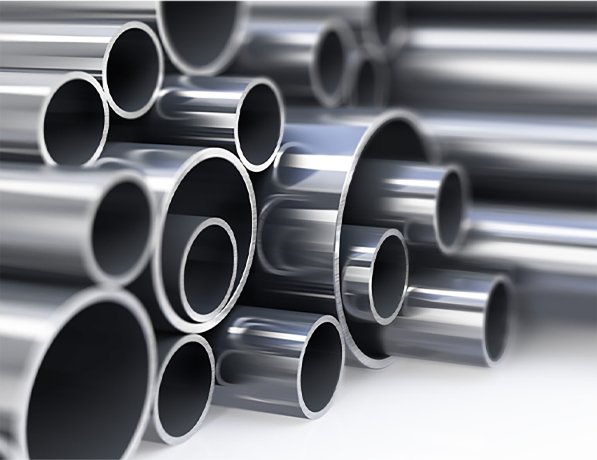Seamless Steel Pipe Production Methods and Techniques Overview
Nov . 30, 2024 10:57
The Seamless Steel Pipe Manufacturing Process
Seamless steel pipes are essential components in various industries, including construction, oil and gas, and manufacturing. Their unique properties, such as strength and durability, make them suitable for high-pressure applications. The manufacturing process of seamless steel pipes involves several key steps that ensure the final product meets the required specifications and quality standards.
Raw Material Selection
The process begins with the selection of high-quality steel billets or blooms. These raw materials are crucial, as the chemical composition and physical properties will significantly affect the mechanical characteristics of the final pipe. Common materials used for seamless pipes include carbon steel, alloy steel, and stainless steel, each chosen based on the intended application and environmental conditions.
Heating
Once the raw materials are selected, they are heated in a furnace to a temperature typically between 1200 to 1250 degrees Celsius. This heating process is vital as it increases the malleability of the steel, making it easier to deform during subsequent processing stages. By precisely controlling the heating temperature, manufacturers can ensure that the billet is uniformly heated, which helps to prevent defects in the final product.
Piercing
After the billets are sufficiently heated, they undergo a piercing process to create a hollow tube. This is typically achieved using a piercing mill where the heated billet is placed on a mandrel, and a piercing punch is driven into the center. The force of the punch creates a hole in the billet, forming an initial tube shape. This step is critical as it sets the foundation for the seamless pipe.
Elongation
Following piercing, the hollow tube undergoes an elongation process to achieve the desired length and diameter. The tube is passed through a series of rollers and sizing mills, which further shape and elongate the pipe. During this stage, the wall thickness can also be adjusted to meet specific requirements. The elongation process relies on precise control of the rolling speeds and temperatures to maintain the integrity of the material.
seamless steel pipe manufacturing process
Heat Treatment
Once the desired length and diameter are achieved, the seamless pipes undergo heat treatment to enhance their mechanical properties. Heat treatment processes such as normalizing, hardening, and tempering are commonly used to refine the microstructure of the steel. This results in improved strength, ductility, and resistance to stress corrosion, making the pipes suitable for high-pressure applications.
Cold Working (Optional)
In some cases, manufacturers may perform cold working on the pipes to achieve tighter tolerances and better surface finishes. This process involves further deformation at room temperature, which enhances the strength of the material through strain hardening. The choice to cold work depends on the specific requirements of the application.
Finishing
The final stages of the manufacturing process involve surface finishing and inspection. Pipes may undergo processes such as shot blasting, pickling, or coating to improve their surface quality and corrosion resistance. Strict inspections are carried out using non-destructive testing methods such as ultrasonic or radiographic testing to detect any internal or external defects.
Packaging and Delivery
Once the pipes pass all quality checks, they are cut to the required lengths, packaged, and prepared for delivery. Proper packaging is essential to protect the pipes during transportation and storage.
Conclusion
The seamless steel pipe manufacturing process is a complex and highly controlled operation that ensures the production of high-quality pipes capable of withstanding demanding conditions. By following precise steps from raw material selection to finishing, manufacturers can produce seamless steel pipes that meet the rigorous standards required across various industries. The durability and strength of seamless pipes make them a critical choice for many applications, ensuring their continued relevance in modern engineering and construction.
 Afrikaans
Afrikaans  Albanian
Albanian  Amharic
Amharic  Arabic
Arabic  Armenian
Armenian  Azerbaijani
Azerbaijani  Basque
Basque  Belarusian
Belarusian  Bengali
Bengali  Bosnian
Bosnian  Bulgarian
Bulgarian  Catalan
Catalan  Cebuano
Cebuano  Corsican
Corsican  Croatian
Croatian  Czech
Czech  Danish
Danish  Dutch
Dutch  English
English  Esperanto
Esperanto  Estonian
Estonian  Finnish
Finnish  French
French  Frisian
Frisian  Galician
Galician  Georgian
Georgian  German
German  Greek
Greek  Gujarati
Gujarati  Haitian Creole
Haitian Creole  hausa
hausa  hawaiian
hawaiian  Hebrew
Hebrew  Hindi
Hindi  Miao
Miao  Hungarian
Hungarian  Icelandic
Icelandic  igbo
igbo  Indonesian
Indonesian  irish
irish  Italian
Italian  Japanese
Japanese  Javanese
Javanese  Kannada
Kannada  kazakh
kazakh  Khmer
Khmer  Rwandese
Rwandese  Korean
Korean  Kurdish
Kurdish  Kyrgyz
Kyrgyz  Lao
Lao  Latin
Latin  Latvian
Latvian  Lithuanian
Lithuanian  Luxembourgish
Luxembourgish  Macedonian
Macedonian  Malgashi
Malgashi  Malay
Malay  Malayalam
Malayalam  Maltese
Maltese  Maori
Maori  Marathi
Marathi  Mongolian
Mongolian  Myanmar
Myanmar  Nepali
Nepali  Norwegian
Norwegian  Norwegian
Norwegian  Occitan
Occitan  Pashto
Pashto  Persian
Persian  Polish
Polish  Portuguese
Portuguese  Punjabi
Punjabi  Romanian
Romanian  Samoan
Samoan  Scottish Gaelic
Scottish Gaelic  Serbian
Serbian  Sesotho
Sesotho  Shona
Shona  Sindhi
Sindhi  Sinhala
Sinhala  Slovak
Slovak  Slovenian
Slovenian  Somali
Somali  Spanish
Spanish  Sundanese
Sundanese  Swahili
Swahili  Swedish
Swedish  Tagalog
Tagalog  Tajik
Tajik  Tamil
Tamil  Tatar
Tatar  Telugu
Telugu  Thai
Thai  Turkish
Turkish  Turkmen
Turkmen  Ukrainian
Ukrainian  Urdu
Urdu  Uighur
Uighur  Uzbek
Uzbek  Vietnamese
Vietnamese  Welsh
Welsh  Bantu
Bantu  Yiddish
Yiddish  Yoruba
Yoruba  Zulu
Zulu 












